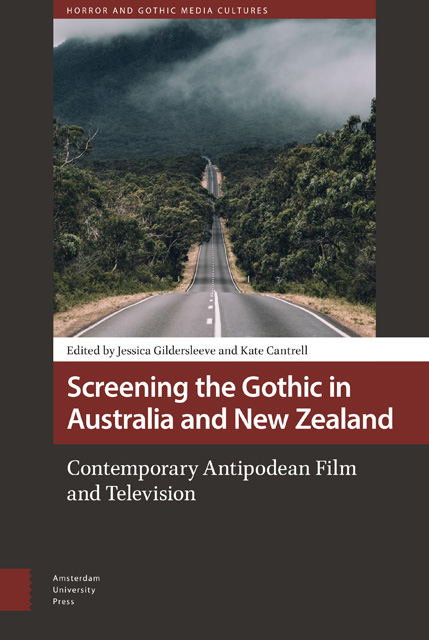3 - The Kettering Incident: From Tasmanian Gothic to Antarctic Gothic
Published online by Cambridge University Press: 24 November 2022
Summary
Abstract
This chapter discusses the relationship between Tasmanian Gothic and post-continuity television through a sustained examination of how place operates in The Kettering Incident (2016). Just as post-continuity television works to undercut the unity of place typical of quality television, so Tasmanian Gothic challenges the rhetorics of place that are peculiar to Tasmania in Australian history and lore. Similarly, whereas post-continuity television challenges the fixation of quality television with regionalism, Tasmanian Gothic questions the way in which Tasmania, as a region, is received in the Australian popular imagination. Placing these two aesthetic orientations side by side reveals that Tasmanian Gothic is an inherently post-continuous aesthetic.
Keywords: Australian Gothic; Tasmanian literature; Australian television; Tasmanian television
When The Kettering Incident was released in 2016, the show prompted a common response from critics: this was Tasmanian Gothic, but it was something else as well. Set and shot almost entirely in Tasmania, the series follows Anna Macy, a doctor played by Elizabeth Debicki, who returns to her hometown of Kettering, after spending fifteen years in London. As the series unfolds, we learn that Anna left Kettering after her best friend, Gillian, disappeared while camping with her in the forest. Although Anna claimed that she saw strange lights and passed out before waking to find Gillian gone, many of the town's residents believe she had something to do with the disappearance. Across eight elliptical episodes, the series takes us through a range of Tasmanian Gothic tropes that escalate so rapidly and converge so dramatically that they quickly seem to exhaust the genre itself.
In one of the foundational formulations of Tasmanian Gothic, Jim Davidson characterized this particular mode of the Gothic as peculiarly occupied with the double valency of presence. Tasmanian Gothic, Davidson argues, is above all concerned with a ‘landscape containing presences […] more correctly styled absences’ (316). These negative presences – of the original Indigenous populations, of the particular cruelty of the Tasmanian colonies, of the endemic flora and fauna – were mobilized in the Tasmanian Gothic mode to articulate ‘disjunctions between past and present’ (Davidson 310). Davidson's comments suggest that Tasmanian Gothic is a structure of feeling as much as a discrete literary style or movement.
- Type
- Chapter
- Information
- Screening the Gothic in Australia and New ZealandContemporary Antipodean Film and Television, pp. 61 - 78Publisher: Amsterdam University PressPrint publication year: 2022



